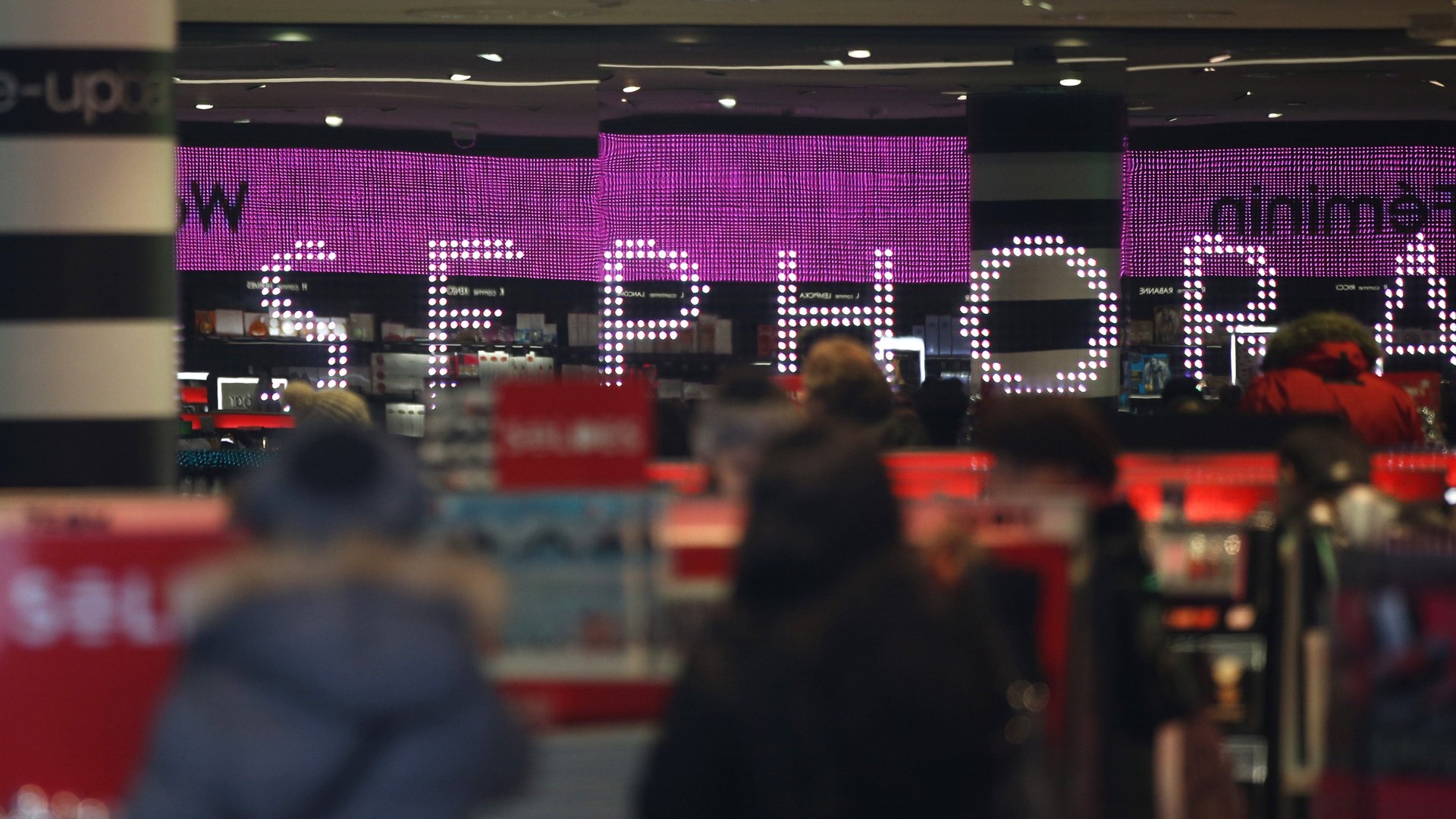Apps will never replace the brick-and-mortar experience necessary for beauty
Last Friday, I wrote about L’Oréal’s recent acquisition of ModiFace, a tech company that specializes in making augmented reality apps for beauty brands. L’Oréal, one of the world’s largest cosmetics companies, is banking on the inevitability that someday, you will just use an app to test a particular shade of lipstick on your face instead of actually putting it on your lips before smearing it off onto a tissue.


Last Friday, I wrote about L’Oréal’s recent acquisition of ModiFace, a tech company that specializes in making augmented reality apps for beauty brands. L’Oréal, one of the world’s largest cosmetics companies, is banking on the inevitability that someday, you will just use an app to test a particular shade of lipstick on your face instead of actually putting it on your lips before smearing it off onto a tissue.
But what happened to me on the Saturday after I wrote that story made me understand one reason brick-and-mortar beauty stores may be impervious to the app invasion.
I had already gotten on the subway on the way to see a friend, when I realized that I had no eyebrows. I forgot to use my Chanel Brow Powder Duo palette as I usually do in the morning. Luckily, there was a Sephora near my friend’s train stop.
I walked in with no intention of buying anything. Sephora stocks clean disposable applicators (brushes, cotton pads, mascara wands, etc.) around the shop so you can safely and hygienically test every single cosmetic and skincare product on the shelves. (There’s also makeup remover when you want to take all off.) I grabbed an eyeshadow brush and a mascara wand and headed to the section stocking Anastasia Beverly Hills—Kylie Jenner’s go-to brow brand. My brows! Suddenly they existed again.
I’m not the only one who engages in what Claire Carusillo dubbed “Sephora scamming” in an article for Racked. “Besides Costco and olive oil stores at high-end malls, Sephora is the best place to take full advantage of what is offered for free,” she wrote. ”When it comes to toning and moisturizing, use the products you might not shell out for otherwise.” I know friends who paint their nails at Sephora instead of going to a nail salon or buying the bottle. Is it shameless or shameful to incorporate Sephora freebies into your beauty routine? That depends on how willing you are to primp and groom in a crowded shop full of potentially judgmental makeup enthusiasts.
It’s not just Sephora, either—you could do this at Ulta, Bluemercury, Space NK, or any other brick-and-mortar beauty shop that stocks disposable applicators and products for testing. Sephora, however, perfected the experience, allowing you to stay relatively anonymous; no salesperson is going to stare you down for spending too much time in front of the mirror, and, unlike at traditional department-store beauty counters, no one at Sephora will pressure you to buy anything. You can test 12 lipsticks in succession or you can just put on the one you know you love but ran out of at home.
I joked later that day that Sephora is the most important public gathering space after libraries and parks, but I’m not naïve enough to think that Sephora’s openness towards product testing is an act of benevolence. It’s about building brand loyalty, and eventually turning the “scammers” into buyers. It’s like the Apple store, where you can check your email at any time; in college, I wrote a paper at the Apple Store when my laptop broke.
But if you’ve ever ducked into Sephora to wait out a spontaneous thunderstorm or to fix your mascara after crying at work (it happens), you’d understand my sentiment: no app or website is going to fix your beauty emergency for free.